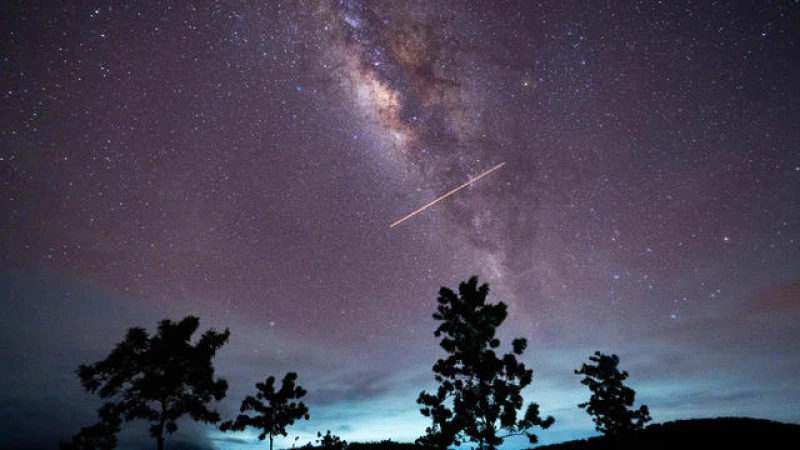Get ready for one of the best meteor showers of the year, astronomy fans: the Eta Aquariids are about to peak, according to NASA.
The shower will peak overnight on Sunday into Monday, though meteors from the shower will be visible throughout the week, NASA said. The peak is happening near a new moon, which means the sky will be darker and it will be easier to catch a glimpse of the meteors.
When and where to see the Eta Aquariids meteor shower
The best time to see the meteor shower is overnight Sunday into Monday. The shower will be viewable in both the Northern and Southern Hemisphere during pre-dawn hours, though the best viewing experience will be in the Southern Hemisphere. Viewers in the Southern Hemisphere can catch 40 meteors per hour, while in the Northern Hemisphere, viewers will see 10-20 meteors an hour.
Eta Aquarid meteors in the Northern Hemisphere are often Earthgrazers — long meteors that appear to skim the surface of the Earth at the horizon.
To experience the best view of the meteor shower, find a location far from city lights or street lights. NASA recommends lying flat on your back with your feet pointing east. It may take up to 30 minutes in the dark for your eyes to adjust enough to see the meteors.
"Be patient – the show will last until dawn, so you have plenty of time to catch a glimpse," NASA said.
Even after the peak, the meteor shower will continue through May 27.
What makes the Eta Aquariids special?
The Eta Aquariids are known for their incredible speed. NASA highlights that these fast meteors can leave glowing trains behind them, which can last for several seconds to minutes. The Eta Aquariids travel at a staggering speed of 44 miles per second.
The meteors in the Eta Aquariids originate from space debris left by Halley's comet. With each return to the inner solar system, Halley sheds a layer of ice and rocks into space. This shed space dust creates two meteor showers annually: the Eta Aquariids in May and the Orionids in October.
What are meteor showers?
While meteors – space rocks that enter Earth's atmosphere – streak through the sky every night, meteor showers occur less frequently. During meteor showers, many meteors enter Earth's atmosphere over a short period of time. As they traverse the atmosphere, the meteors produce streaks of light caused by glowing, hot air.
Not all stars that fall from the sky burn up in the atmosphere. Some brave the journey and make it to Earth as meteorites.
Cast your gaze upwards — what other celestial wonders can you spot this spring?
For those with a passion for astronomy, the Flower Moon will grace the night sky this month as May's full moon makes its appearance. According to NASA, the full moon in May will shine brightest on May 23. The Old Farmer's Almanac provides detailed moonrise schedules for various ZIP codes across the United States.
The full moon in May marks the end of spring, with June's full moon set to reach peak brightness on June 21, just one day after the summer solstice.
The upcoming meteor shower to watch out for is the Southern delta Aquariids in July, as reported by the American Meteor Society.







